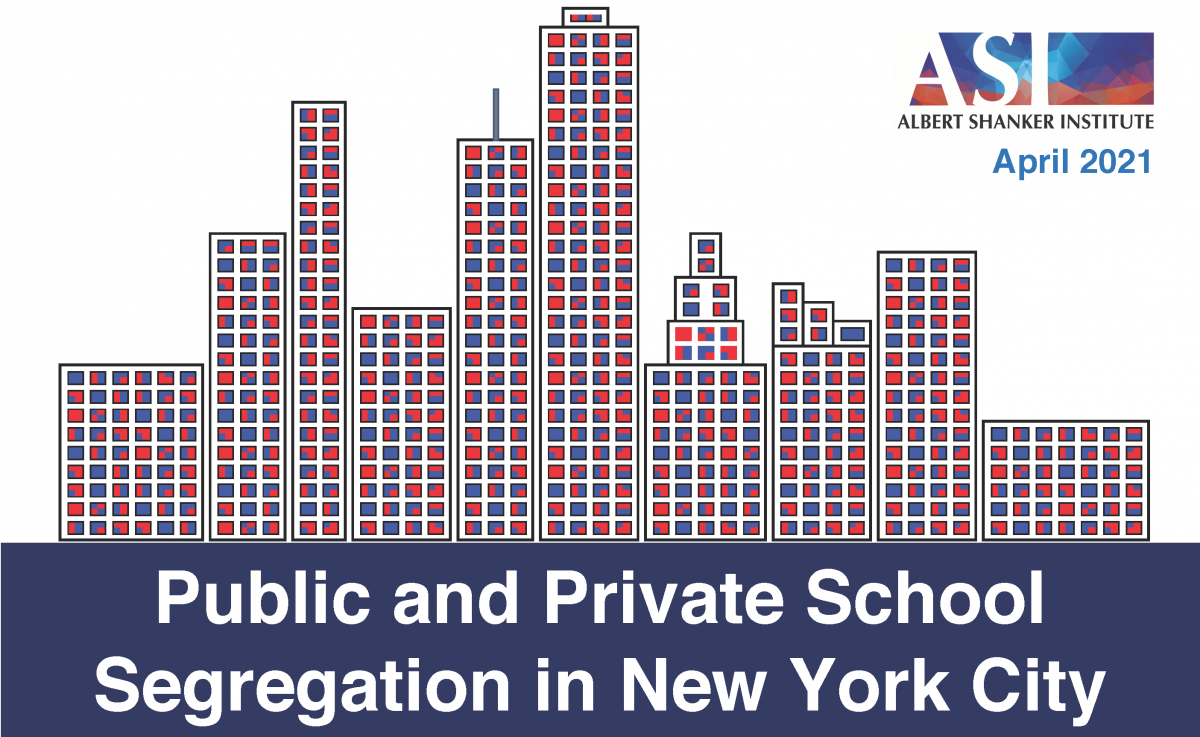Public and Private School Segregation in New York City

Although school segregation in New York City (NYC) has received a great deal of attention for several decades, the vast majority of contemporary analyses, in the city and elsewhere, exclude private school students. This is mostly due to the fact that formal desegregation efforts have focused on public schools.
Yet NYC’s enormous private school sector—were it a school district, it would be among the 20 largest in the nation—differs substantially from the city’s public sector in terms of the racial and ethnic composition of its students. For example, private schools serve about 14 percent of all NYC students, but 40 percent of its White students. Any attempt to describe the school segregation regime in NYC without private schools may therefore be missing an important part of the picture.
In this report, we present findings from a descriptive analysis of segregation by race and ethnicity in all NYC schools in the 2017-18 school year, with a particular focus on comparing the public and private sectors. A summary of our findings is as follows (download the full report):
Racial and ethnic segregation is generally high in both sectors, but it is consistently higher in the private sector.
- Based on segregation measures that include White, Black, Hispanic, and Asian students as separate groups (i.e., “multiracial segregation”), the typical public school is 33 percent less diverse than the public sector as a whole, whereas the typical private school is 51 percent less diverse than the private sector overall.
- Due to compositional differences between sectors, White private school students have far less opportunity for interaction with students of color than do their White public school peers. For instance, in a city where 23 percent of all students are White, the typical White private school student attends a school in which almost 90 percent of her peers are also White. In the public sector, by comparison, the typical White student's peers are just over 40 percent White.
The potential for total citywide integration is constrained by the separation of students between sectors.
- For example, 16 percent of citywide “multiracial segregation” is found between the public and private sectors—that is, 16 percent of segregation is due to the racial/ethnic imbalance of students between sectors.
- This is in no small part because private schools serve 14 percent of the city’s students but roughly two of every five of its White students.
- This “contribution” of between-sector segregation, along with high segregation within the private sector, means that perfect multiracial integration of the roughly 1,800 schools within the NYC public sector, without desegregation within the private sector and students moving between sectors, would leave approximately 30 percent of total citywide segregation intact.
Schools’ religious affiliations play a role in segregation within the private school sector.
- Most notably, segregation is substantially higher within the “non-Catholic religious” subsector than it is within the “Catholic” or “non-sectarian” subsectors.
- In addition, 31 percent of total multiracial segregation within the private sector is found between these three subsectors. That means that almost one-third of private sector segregation could not be addressed without students moving between these groups of schools.
- This is due partially to the fact that Catholic schools serve only 32 percent of all private school students, but almost two-thirds of Black, Hispanic, and Asian private school students attend private Catholic schools.
Finally, we show that the separation of minority groups from each other is an important contributor to school segregation in NYC.
- Approximately half of total citywide (public and private combined) multiracial segregation consists of the separation of White from Black, Hispanic, and Asian students, whereas the other half is due to the separation of Black, Hispanic, and Asian students from each other.
- The group structure of segregation, however, varies widely between sectors. Within the private sector, the separation of White from “minority” students is the major factor, whereas in the public sector we reach the opposite conclusion: total segregation is driven mostly by the separation of Black, Hispanic, and Asian students from each other.
Efforts to desegregate NYC public schools should of course be a priority. Yet our findings show that these efforts, without desegregation of the private sector and movement of students between sectors, may be limited in their potential citywide impact. This is particularly unfortunate given that the city’s student population is incredibly diverse, especially when private schools are included, and this diversity represents an opportunity for truly integrated schools.
It is unclear how a contraction of the public school sector would affect citywide segregation, as we cannot determine what parents would do without private school options (e.g., move to the suburbs or send their children to public schools in a manner that increases or reinforces segregation). Our results do, however, suggest that the private school sector in New York City exerts outsized influence on the city’s school segregation regime.
Download the full report
Documents
